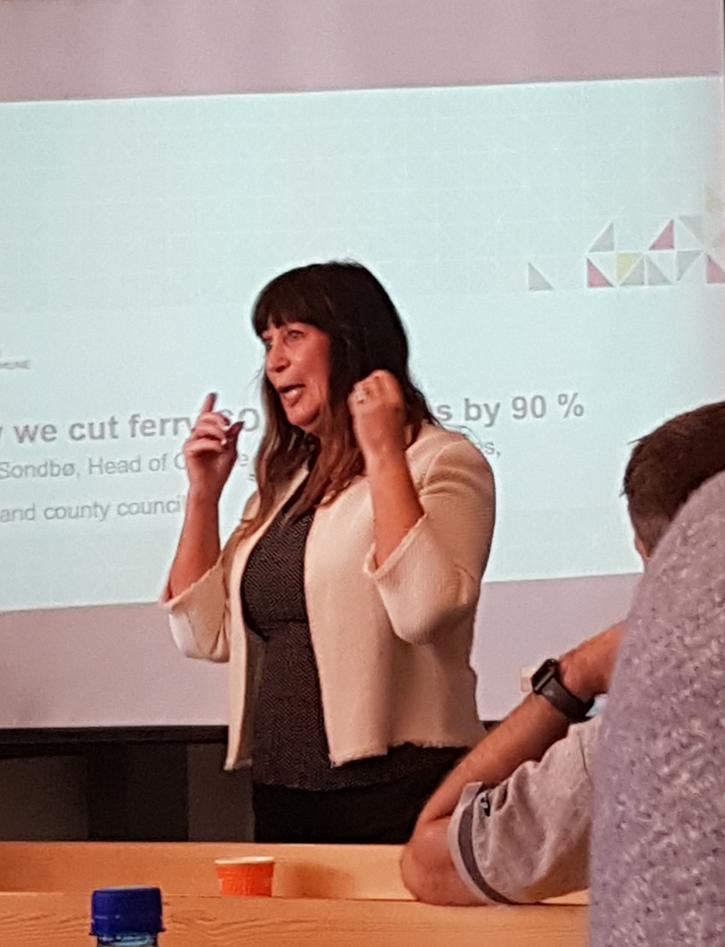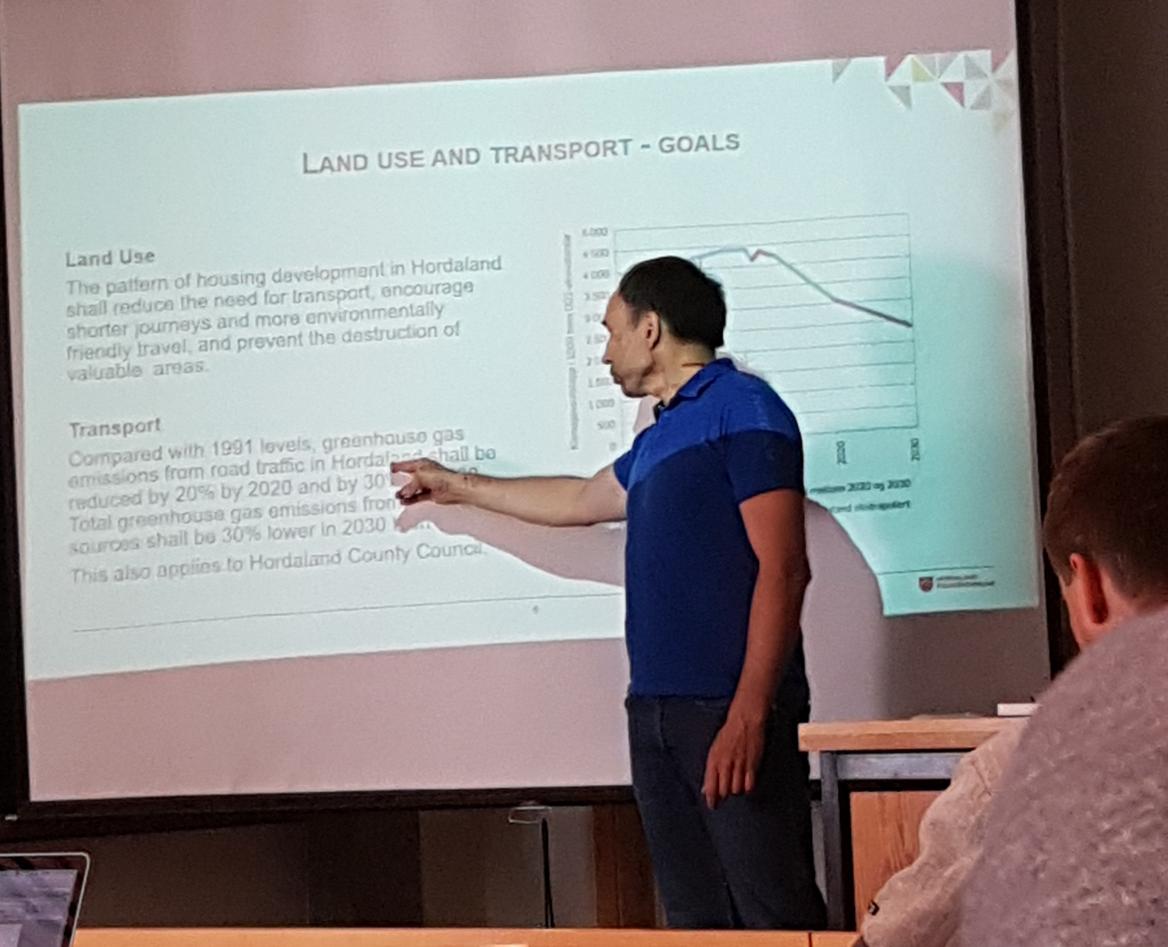Autumn 2017 kickoff meeting

Main content
On the first Bergen Energy Lab event of the semester, Eva Britt Isager from Bergen Kommune (City of Bergen) and Sølve Sondbø from Hordaland County Council held two very interesting presentations about climate plans and actions in Bergen and Hordaland.
Eva Britt Isager is the head of the climate section in Bergen Kommune. The climate section is responsible for climate and environmental work in the municipality of Bergen, including organizing and coordinating activities as well as developing climate and energy action plans for Bergen. The green strategy for Bergen was approved by the City Council on September 21st 2016, and aims for Bergen to become the greenest city in Norway.
Already in three years, in 2020, Bergen aims to reduce direct greenhouse gas emissions by 30 % compared to 1991-levels. Furthermore, in 2030 Bergen will be a fossil-free city, and in 2050 it will be a 1.5-degree city following UN standards.
Reaching these goals will be demanding, and requires massive efforts. Current emissions come from transport (58 %), heating (16 %), waste management (25 %) and agriculture (1 %). Several strategies and measures within these sectors have already been proposed, including prohibiting the use of oil-fired stoves for heating by 2020, implementing carbon capture and storage on the waste incineration plant by 2025, promoting zero-emission transport by providing good access to renewable fuels (charging stations, hydrogen filling stations and biofuel filling stations) and many more.
After Eva Britt’s presentation on Bergen Kommune, the scope was broadened to look at climate plans at a regional level. Sølve Sondbø, the head of Climate and Natural Resources at the Hordaland County Council, spoke about cutting emissions in the Hordaland County with a specific focus on ferries.
More than half of the greenhouse gas emissions from Hordaland county council are from industrial activities, including the largest singular Norwegian greenhouse gas emitter, the Statoil Mongstad Oil Refinery and Gas Power Plant. Of the emissions the County Council can influence, 99 % are from bought services such as ferries, buses and speed-boats. Ferries are the largest of these, corresponding to 43 % of the County Council’s own emissions.
In 2016, the County Council held a tender for all the 17 ferry connections they are responsible for in Hordaland (of a total of 19 connections). In order to compete for these contracts, a minimum cut of 55 % on CO2-emissions and 25 % on energy use was required. Further cuts in CO2 and energy use were also taken into account in the final decision.
Four ferry operators won contracts with zero/low emission technology, cutting about 90 % of CO2 emissions and 65 % of energy use. In sum, the ferry tender cuts 40 % of the greenhouse gas emissions the County Council can influence, which represents a reduction of about 51 000 tons of CO2 per year. This corresponds to about 6 % of all road emissions in Hordaland.
Finally, the County Council pointed out that they give grants to master theses on climate which are relevant for the County Council Climate plan. More information and the application form can be found here (in Norwegian).

